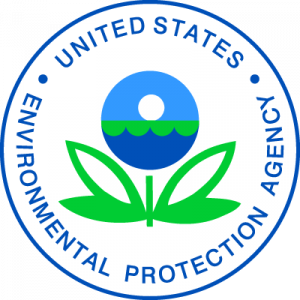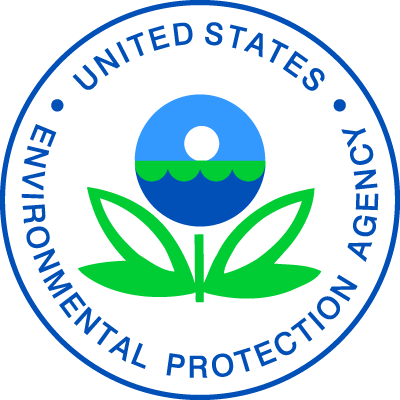According to basic economic theory, regulated entities will comply with the environmental laws when the expected benefits of doing so (most  prominently, avoiding penalties) outweigh the expected costs of compliance. Theoretically, economists say, there is an optimum level of enforcement where expected sanctions equal expected harm, taking into account the probability that violations will be detected.
prominently, avoiding penalties) outweigh the expected costs of compliance. Theoretically, economists say, there is an optimum level of enforcement where expected sanctions equal expected harm, taking into account the probability that violations will be detected.
Yet the actual level of enforcement of the environmental laws is never optimal, even at the best of times. Enforcement agencies such as the United States Environmental Protection Agency (EPA) and its state counterparts like the Wisconsin Department of Natural Resources (DNR) have imperfect information about ongoing violations. They are not omniscient. And even if they had perfect information, there are often many more potential enforcement targets than can be pursued with limited agency resources. Enforcement, of course, is part of a broad mix of agency responsibilities that also includes rulemaking, standard setting, monitoring, and many other activities. Finally, political leaders may appoint agency heads who drive the pursuit of more or less than the optimal enforcement level.
Enter the pandemic. It adds a new layer of complexity, to understate the matter, in that enforcement agencies must take several new and highly important factors into account, such as the safety of agency personnel and the economic damage some regulated entities are experiencing. Staff who might normally be inspecting permitted facilities or investigating reported violations may be sick, quarantined, or at the very least, working from home. These factors have led some agencies to relax enforcement activities, as discussed in more detail below. Even if they are presumed to be well-meaning, such policies may worsen the situation in communities already disadvantaged by pollution levels that seriously impact public health. In turn, this may expose those communities to additional risks during or following the pandemic.
Enforcement agencies have taken a wide variety of approaches to the problem of enforcement during the pandemic. Some have expressly announced relaxed levels of enforcement. For example, the U.S. Department of Justice has agreed to provide relief on payments due under environmental consent decrees. EPA’s policy encourages regulated entities to make “every effort” to comply with environmental obligations; but where compliance is not “reasonably practical,” entities should “act responsibly under the circumstances . . . to minimize the effects and duration of any noncompliance.” So long as EPA concludes those steps were followed, the agency announced it will generally not take enforcement actions for violations of reporting and monitoring requirements, among other things, so long as the entity out of compliance draws a direct nexus between the COVID-19 virus and the noncompliance. EPA “will consider the circumstances, including the COVID-19 pandemic, when determining whether an enforcement response is appropriate,” even in cases of an imminent threat to human health or to the environment.
Similar policies have been advanced in some states. Maine and Texas, for example, announced that they will accept requests for enforcement discretion. Montana has suspended inspections of regulated solid waste sites. Louisiana has extended deadlines for reporting and monitoring activities. And Arizona, Colorado, and Illinois have waived vehicle emissions testing requirements for some or all residents.
The Wisconsin DNR’s COVID-19 policy does not offer any blanket exceptions. It makes clear that “all state laws and regulations remain in effect.” But DNR will “prioritize responding to imminent threats . . . related to public health, safety and the environment over routine, on-site audits and inspections.” And DNR has created a portal for regulated entities to request assistance with “likely compliance issues associated with COVID-19.” The state policy encourages “every effort” to comply with the environmental laws while offering a “roadmap” where full compliance is not possible.
The federal policy in particular has triggered allegations that EPA is simply using the pandemic as an excuse in the service of a broader agenda of environmental deregulation. A letter to EPA signed by 14 state attorneys general (including Josh Kaul of Wisconsin) argues that the federal policy “turns a blind eye to the impacts on our communities,” that it is overbroad in scope and unnecessarily retroactive, and that it has no expiration date. The AGs allege that the policy will have a serious impact on public health, especially in low income and minority communities at greater risk of suffering adverse consequences in the pandemic.
Indeed, numerous studies have shown that socioeconomic disparities create unequal exposures to environmental hazards: disadvantaged communities often experience higher concentrations of air and water pollution. In turn, these conditions create health conditions that make those same populations more vulnerable to the pandemic. And relaxed enforcement policies may change the calculus for optimal enforcement described above by decreasing the likelihood that violations will be detected and enforced.
We are studying these issues. Marquette University has launched a COVID-19 research initiative, and the Law School’s Water Law and Policy Initiative is part of a project organized under this umbrella. Our interdisciplinary team hopes to predict probable locations of severe COVID-19 outbreaks, given virus detections in wastewater combined with existing socioeconomic indicators. We will also investigate the potential for disproportionate pandemic effects on at-risk or disadvantaged communities and employ advanced modeling techniques to analyze the data that we collect and obtain.


One area that could be studied is the residential areas around the WE Energy Power Plants in Oak Creek and the higher prevalence of particulate coal dust health problems. Death rates may be higher from Covid-19 infections with pre-existing lung problems. A map of Milwaukee County Covid-19 detections (Link below) shows an increase in the Oak Creek area which may be the result of more people showing symptoms.
https://www.dhs.wisconsin.gov/covid-19/cases-map.htm
This is a very timely and thoughtful blog.